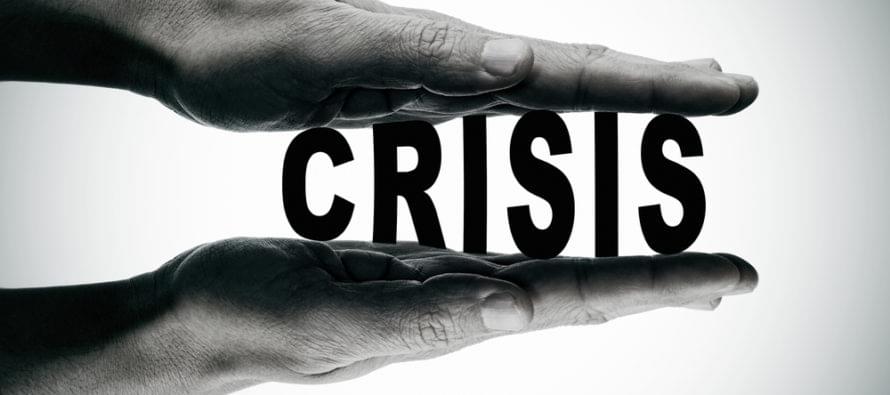How to manage customer satisfaction in a crisis
It all starts with the resolve to be prepared and stay calm – and having a crisis management plan in place (one that you revisit from time to time). Depending on the size and maturity of your business, it’s often a crisis that illuminates the need for a plan. The truth is that no one expects a crisis, and so how you respond is always the most important thing. You can consistently provide transparent and accurate communication that maintains a trusting relationship with your customers.

The key element that ties all of crises together is that they can affect many customers at the same time. In this situation public communication is usually required, and that means you want your team to speak in a single voice.
The do’s and don’ts
Whether you already have a crisis plan or are developing one on the fly, establishing a plan will help keep everyone in your organization (including your support team) calm. This will also keep your customers calm — hearing from confident, prepared, and knowledgeable employees is exactly what they want from you in an emergency situation. Customers want to know that you can manage the problem (and hopefully prevent it from happening again), and to know that you care about them.
Have a responsible person who brings together and sees the action plan and communication for the entire organization.
In a short-term crisis, the goal should be to resolve the issue and return to normal as quickly as possible. In an ongoing crisis, it may mean trying to mitigate negative impacts while the situation evolves. Share regular updates through email, social media, help center, and your company website. If service can’t be restored at the levels customers are used to, just briefly and honestly explain the situation, convey that you’re working to mitigate it, and outline the best ways to reach you and/or set expectations for response time.
Respond to all external and internal inquiries, complaints, questions, inquiries, unanimously representing the message we have articulated in advance throughout the organization, in the voice and style of our brand. We suggest that we are also available in times of crisis, thus building pillars of satisfaction and trust.
This is no time to deny, cover up, or shift blame. Transparency and honesty are key, both internally and externally. It’s okay to say that you don’t know the answer to a question or that you’re still evaluating the situation. Just keep the lines of communication open between you and your customers.
Don’t make hasty decisions – You may need to shift tactics or reevaluate your plan several times throughout the course of a crisis. You want to act swiftly, but don’t make a hasty decision in the heat of the moment.
Don’t ignore risk – You can never be too careful, especially if health, safety or security are at risk. That doesn’t mean you should jump to conclusions, but it’s often better to be overly cautious.
How to communicate during a crisis
Be timely – communicate as soon as you can, and then follow a set cadence for follow-up communications. Communicate the scope of the issue (who is affected, or likely to be), as well as the impact (how it will affect them). If there is no new information, keep in touch, too, because “pause” makes you unsure. Post pictures of the situation, give a face to the problem
Be accurate – don’t speculate. Incorrect information can set unrealistic expectations. Having to correct yourself publicly damages trust in your competence.
Take ownership and acknowledge the impact the crisis is having on your customers. Apologize for that impact, avoid being defensive, and don’t shift blame.
Be honest – don’t lie to your customers. It will come back to haunt you. It’s okay to say you don’t know the answer to something, but try to follow up as soon as you have more information.Constantly and consistently inform all external and internal stakeholders, feel that they are informed about events first hand. Intranets, internal newsletters, the Internet, external newsletters and social channels can also be used for this purpose. We communicate with key partners in person, by phone or by private email.It is very important that, once the crisis situation is over, we send a fact-based summary and evaluative assessment of the situation to each channel with a positive-sounding forecast. Discuss the situation with our employees, partners and also learn lessons together and incorporate it into the next crisis plan.
Source: Zendesk COVID-19 Retail Guide
Related news
(HU) A szorongás átírja a fogyasztói magatartást – Tolnai Gábor a Kantar Hoffmanntól volt a FutureTalks podcast legutóbbi vendége
Sorry, this entry is only available in HU.
Read more >The working group of the Chamber of Agriculture recommends further steps to deal with market disturbances caused by Ukrainian grain
The National Chamber of Agrarian Economy (NAK) welcomes the temporary…
Read more >Crises and realities – today’s deepening crises
Polycrisis. A new concept for the crisis processes that determine…
Read more >Related news
The Christmas season is starting earlier and earlier: value for money is the key
This year, 40 percent of Hungarians brought their Christmas shopping…
Read more >They want it to be premium, but also sustainable – expectations of the youngest generation
GlobalData’s latest report, “Demographics in Retail and Apparel” – which…
Read more >In six months, consumers donated 100 million forints to charitable causes through the mandatory redemption system
Through the deposit bottle return system, which began six months…
Read more >








